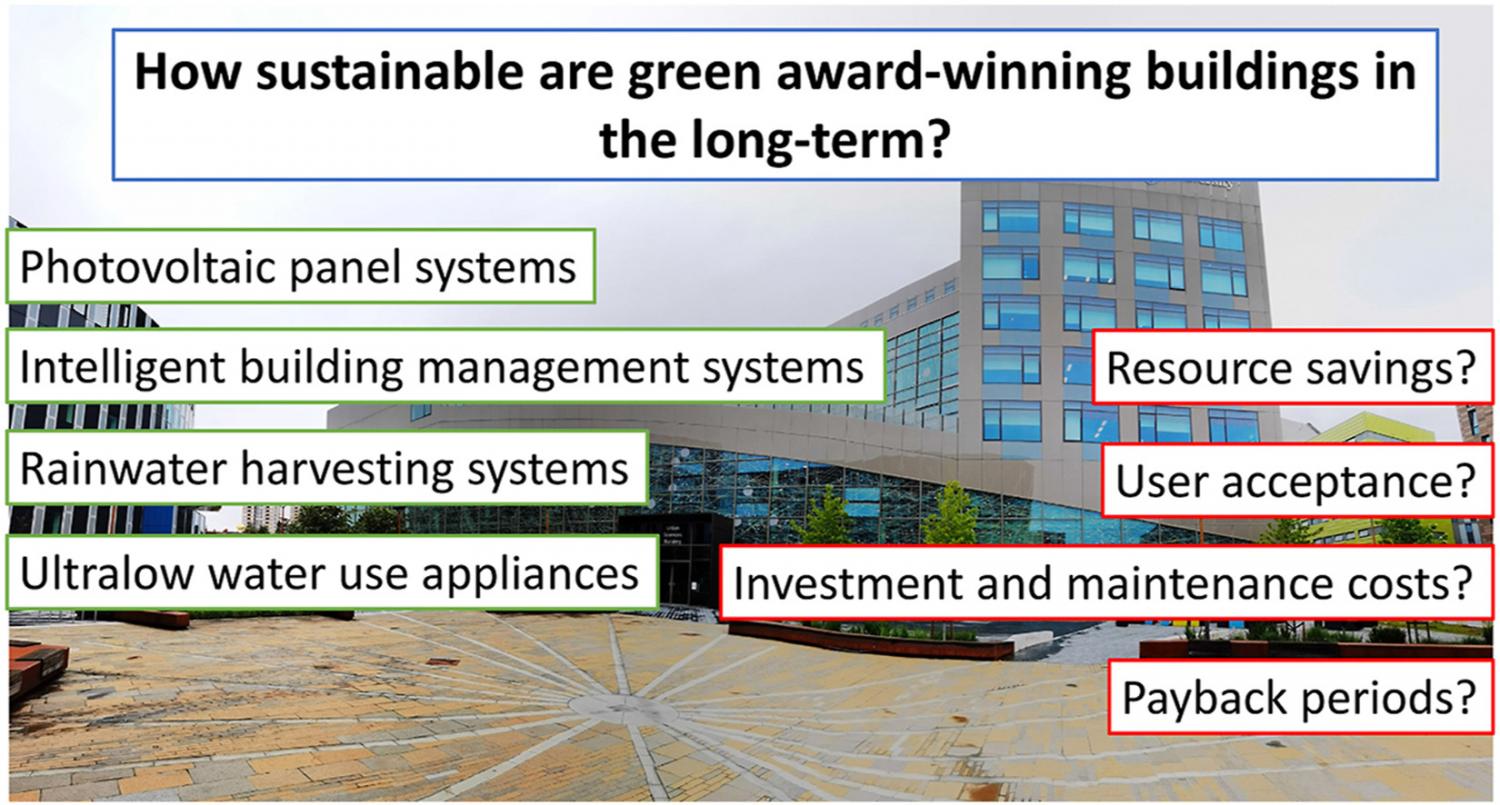
Sustainability certifications like BREEAM, LEED, and China's sustainable green building award certification scheme encourage installation of technologies that save mains water and grid electricity. Among these are rainwater harvesting systems, ultralow water use appliances, photovoltaic panel systems, and intelligent building management systems. In reviewing the performance of two award-winning university buildings over respective periods of sixteen and four years, we found that such systems delivered only 28–71% of their potential resource savings. These performance gaps arose from various technical and social issues (pump failures, tank leakages, poor alignment of demand and supply with limited storage, low photovoltaic panel efficiency, poor user acceptance, etc.), but the consequences were exacerbated by inadequate asset management that resulted in long system downtimes, in some cases for 2–5 years. Repair, maintenance, and upgrading expenses then combined with lower than anticipated water and electricity bill savings that ultimately meant that, for the most part, there was no prospect of earning a return on capital expenditures. Continuous monitoring of building water consumption by an external service provider was the most effective resource and cost saving solution in this study, as it required no capital expenditure, and revealed a 1640 l/h leakage, without putting high demands on the building management. In contrast, little value was obtained from 25 water-related sensors installed as part of a “building-as-a-lab” project because of inadequate post hand-over support. Robust post-commissioning operation should become a key criterion for sustainable building innovation, and this should be reflected in green awards and rating systems.
